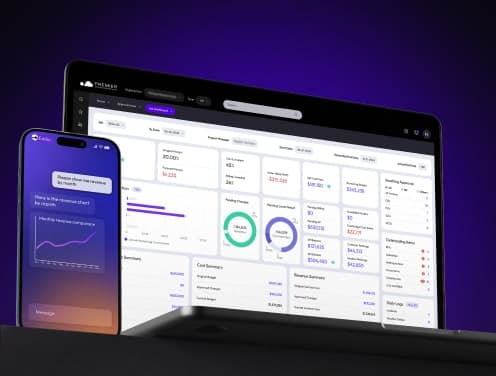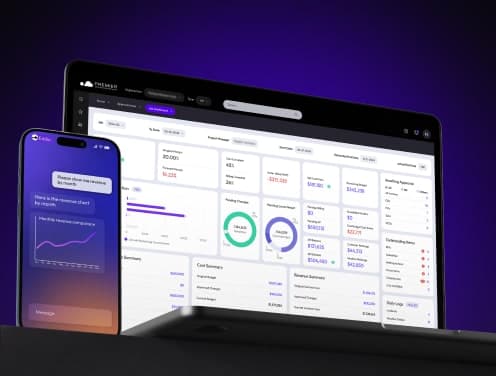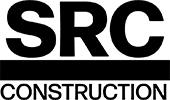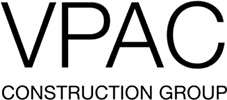
Construction Job Costing: Hidden Costs That Eat Your Project Profits
Cost overrun in construction projects is startlingly familiar - only 31% of projects stay within 10% of their budget. We've seen this reality play out across the industry, where construction companies lose an estimated $273 billion annually due to avoidable errors.
Unfortunately, these budget overruns aren't just annoying - they're existential threats. About 25% of construction companies face bankruptcy after just two or three wrong estimates. The costs in construction spiral quickly when job costing is done incorrectly. In fact, avoidable errors typically cost 5% of total project budgets—often more than what general contractors make as fees.
When we examine construction cost overruns more closely, the problems often begin with inefficient project management, creating a domino effect of issues. Poor scheduling and communication breakdowns are common hidden costs that drain profits, leading to delays and increased expenses. Projects with inaccurate costing are simply more likely to go over budget or experience delays.
In this article, we'll dig into the hidden costs eating away at your construction profits and share practical solutions to help you keep more of what you earn.
The real cost of inaccurate job costing
Construction companies lose an estimated $273 billion annually due to avoidable errors. The numbers paint a grim picture - 25% of construction companies face bankruptcy after just two or three wrong estimates. These statistics tell a brutal story: bad job costing doesn't just reduce profits—it can destroy businesses completely.
Financial impact of estimation errors
Wrong estimates send shockwaves through your business. Bad job costing drops win rates by up to 30%. This happens two ways: high prices drive clients away, while low prices create losses on secured projects.
Project wins don't guarantee success with wrong estimates. Research shows estimation mistakes lead to roughly 3% profit loss in successful bids. This might not sound like much. Yet construction companies usually operate on thin margins of 1.4% to 2.4%, so these losses can wipe out all profit.
Avoidable errors typically cost 5% of total project budgets—often more than what general contractors make as fees. This means fixing these errors could double your margin on fixed-bid projects.
Bad job costing creates money problems that hurt your business:
- Cash flow issues that stick around
- Less money to grow your business
- Harder to win future bids
- Risk of damage claims from missed deadlines
How small miscalculations compound over time
Small mistakes grow big in construction. Research shows the industry wastes about 35% of labour costs because job site data doesn't connect—that's $177 billion across the sector.
Construction errors become dangerous because they pile up. Multiple changed conditions cost more than adding up individual changes. This snowball effect happens because:
- Changes create more disruption together than alone
- Rush jobs force teams to use incomplete designs
- Fixes multiply with each new change
- Workers lose time switching between unfinished tasks
Complex projects on tight schedules make things worse. Studies reveal rework eats up to 20% of total construction costs and causes up to 52% of project delays. One small error triggers a chain reaction—late materials, idle crews, missed deadlines, and mounting overhead costs.
The problem gets worse since 70% of the industry still uses paper or text to collect data. Bad information flows from sites to offices, which keeps the cycle of mistakes going.
Case study: $250,000 profit loss from poor job costing
Thompson Construction's story shows what can go wrong with a $1.25 million contract and $1 million in estimated costs. They expected $250,000 profit, 20% of the contract value.
Year one looked good, with $250,000 in costs matching estimates perfectly. Year two brought trouble as costs hit $600,000—$100,000 over budget. Management missed this 20% overrun because they couldn't see costs in real time.
The final year added $190,000, bringing total costs to $1,040,000. Their expected $250,000 profit dropped to $210,000—$40,000 below the original estimate. Hidden overhead costs and untracked labour added another $210,000 that they hadn't factored in.
The end result? Thompson barely broke even instead of making $250,000—all because their system couldn't spot problems early enough to fix them.
Premier construction job costing software stops these issues through immediate monitoring that catches variances right away. Premier's construction project management software brings all project financial data together, giving contractors clear visibility into performance and catching small issues before they become profit killers.
Labour costs that quietly drain your budget
Labour costs represent the largest expense category in construction projects, accounting for 40-60% of total project costs. Yet many contractors fail to identify the subtle ways these costs quietly drain profits. Beyond the obvious hourly wages, three major labour-related issues frequently create budget overruns that proper tracking could prevent.
Untracked overtime and time theft
If you've ever wondered where your labour budget disappeared, look no further than uncontrolled overtime and time theft. This costly problem affects nearly half of all businesses—49% of U.S. workers admit to time theft, resulting in employers losing a staggering $11 billion annually.
"Time theft" occurs when employees get paid for work they didn't perform. Common forms include:
- Buddy punching (having colleagues clock in/out for absent workers)
- Extended breaks are not reported correctly
- Timesheet manipulation or exaggeration
Without proper tracking, overtime costs quickly spiral out of control. Crews working beyond regular hours can cost contractors up to $10,000 per day in deadline penalties. Moreover, many companies approve overtime to avoid these penalties without considering the financial ripple effects—like time-and-a-half or double-time wages that rapidly erode profit margins.
The impact goes beyond just higher hourly rates. Research indicates that excessive overtime can reduce productivity, create safety risks, and increase worker turnover. Additionally, manual time-tracking introduces errors that accumulate across large projects with multiple crews.
Productivity gaps between estimates and reality
The difference between estimated and actual labour productivity might be the most significant profit leak in construction. Currently, the industry faces a demographic crisis, as 41% of the pre-2020 construction workforce is expected to retire by 2031. Similarly, the UK construction sector is expected to lose approximately 25% of its workforce to retirement within the next 15 years.
This workforce transition creates substantial productivity challenges. Projects frequently experience productivity drops of 40% or more when labour markets tighten. New workers typically require more training and supervision while performing less work.
Several factors widen this productivity gap:
- Poor planning for materials and equipment
- Rush jobs are forcing teams to use incomplete designs
- Different trades competing for workspace
- Excessive movement of workers between tasks
Unfortunately, construction companies rarely track the three key metrics that would identify these issues early: budgeted hours, actual hours worked, and work completion percentage.
The hidden cost of labour burden
Perhaps the most misunderstood aspect of labour costs is the labour burden—the total indirect costs associated with employing workers beyond their hourly wages.
For most construction businesses, labour burden accounts for 30-40% of base wages, with union contractors often facing rates of 60-70%. This means for every dollar you pay in direct wages, you're spending an additional 30-70 cents in related costs.
These indirect costs include:
- Payroll taxes (Social Security, Medicare, unemployment)
- Workers' compensation and liability insurance
- Health insurance and retirement contributions
- Paid time off (holidays, vacation, sick leave)
- Training and professional development
Calculating the labour burden correctly is crucial for accurate job costing. Traditionally, companies applied a flat 30% rate; however, this approach is now considered outdated. Health insurance increases alone can throw a company significantly off-budget.
Industry experts recommend reviewing labour burden calculations every six months to reveal hidden costs and account for changing rates. Premier Construction Software helps contractors track both direct and indirect labour costs in real-time, providing accurate visibility into labour expenses across all projects.
Material and equipment costs you might be missing
Materials account for 30-50% of project costs, yet hidden material expenses often go unnoticed until they've already eaten into your profits. Beyond the obvious line items, several material-related costs can silently drain your budget.
Material shrinkage and waste on job sites
Research shows that a staggering 13% of materials delivered to construction sites become waste. This isn't just an environmental issue - it's a direct hit to your bottom line. Poor material handling, improper storage, and weather damage caused by inadequate storage all contribute to shrinkage.
Construction waste represents pure material loss that creates additional cost. With thorough waste management actions, you can reduce waste by more than half and achieve recycling rates up to 90%. Effective strategies include proper storage to prevent damage and setting up explicit material handling guidelines.
Theft and poor inventory tracking
Construction site theft costs between $300 million and $1 billion annually in the United States alone. More troubling, recovery rates for stolen equipment and materials remain under 20% in most cases. One company reported having "$500,000 of equipment spending the night on job sites" - extremely vulnerable equipment.
GPS tracking technology offers an economical solution. These systems cost approximately $14,000 per year for 100 pieces of equipment, compared to the annual cost of security guards at $26,400 per year. One company saved $2.5 million through the successful recovery of equipment using GPS tracking.
When bulk buying backfires
Bulk purchasing may seem financially savvy, but it often creates unexpected financial burdens. Hidden costs include interest on tied-up cash, storage expenses, higher risk of material damage, and transportation costs between sites. Your company essentially provides interest-free financing for these purchases since billing for stored materials isn't possible until they reach the job site.
Equipment downtime and repair delays
Large construction operations lose approximately 27 hours monthly due to machine failures, costing $532,000 for each hour of unplanned downtime. The average downtime cost for a fleet vehicle ranges from $448-$760 per day. Equipment downtime creates three main cost categories:
- Lost revenue when projects halt
- Collateral damage from idle operators and disruptions
- Schedule delays resulting in penalties and reputation damage
Hidden fees in rental agreements
Rental agreements often contain hidden charges, such as delivery and pickup fees, markup fees, fuel surcharges, and problematic maintenance clauses. Some rental companies charge 30-50% above actual rates for fuel. Other common surprises include cleaning fees, damage waivers, minimum rental periods, and automatic renewal clauses.
Subcontractor and overhead issues that go unnoticed
Subcontractor relationships and overhead calculations represent critical blind spots for many construction companies. Even experienced project managers often overlook these issues until they've already consumed significant portions of profit margins.
Change orders that aren't documented
Undocumented change orders might be the single biggest financial leak in subcontractor management. Construction attorneys regularly see disputes where contractors perform additional work without formal approval, only to face payment rejection later. One real case involved a $605,694 claim on a $1.3 million home construction project—all because of oral change orders without proper documentation.
The financial impact extends beyond just the disputed amount. Legal battles over undocumented changes typically involve substantial attorney fees, court costs, and lost productivity. This particular contractor found itself in an "uncomfortable and uncertain position," where a judge had to determine the content of their agreement.
Scope creep in subcontractor work
Scope creep occurs when project parameters expand beyond initial agreements without formal processes for approval or compensation. This silent profit-killer often starts innocuously—a client requests a minor design tweak or small adjustment that seems manageable alone. However, these changes accumulate rapidly, blurring the lines of accountability.
Financial consequences include extended timelines, budget overruns, and increased legal risk from disputes. Without proper documentation, it becomes challenging to track agreements, particularly regarding who approved what changes and when.
Overhead costs that are misallocated
The average overhead percentage for construction typically ranges from 10% to 11%, although this varies depending on project size and complexity. Yet, many contractors improperly allocate these costs, leading to skewed financial statements and poor bidding decisions.
Common allocation mistakes include:
- Misclassifying costs as either direct or indirect
- Selecting inappropriate allocation bases for different project types
- Failing to incorporate overhead costs into project bids
Project vs company-wide overhead confusion
Construction companies frequently confuse project-specific overhead with company-wide expenses. This confusion leads to double-counting certain costs or omitting others in financial reporting.
A clear distinction helps prevent this costly mistake: project overhead includes costs specific to individual job sites, whereas company-wide overhead encompasses expenses benefiting the entire organization. Without periodic reviews (recommended quarterly), overhead allocation formulas quickly become outdated, resulting in inaccurate job costing and ultimately, reduced profit margins.
How technology gaps lead to budget overruns
The construction industry faces a fundamental technology challenge that directly impacts profitability. A staggering 85% of companies still rely on fragmented general productivity software rather than construction-specific solutions.
Manual systems vs automated job costing
Manual processes create expensive inefficiencies that silently drain profits. Teams waste up to 27 hours monthly on manual data entry, while projects using paper-based systems experience a 75% budget overrun rate. Traditional job costing methods introduce a higher probability of human error—even minor mistakes can compound dramatically throughout a project.
Why real-time tracking matters
Without immediate data visibility, problems remain hidden until they affect the bottom line. Monthly budget reviews simply come too late to prevent cost overruns. Conversely, real-time tracking allows construction companies to:
- Identify cost discrepancies within hours instead of at month-end
- Receive automated alerts when spending exceeds thresholds
- Make corrections before overruns permanently damage profitability
The ROI of using Premier Construction Software
Construction management software yields a remarkable 67% ROI for contractors—each dollar invested returns $1.67 in benefits, with most companies seeing returns within 7 months. Project managers save 10-12 hours weekly with Premier's job costing software through automated workflows that eliminate human errors and reduce clerical work.
Key Takeaways
Construction job costing errors cost the industry $273 billion annually, with 25% of companies facing bankruptcy after just two to three incorrect estimates. Here are the critical insights to protect your profits:
• Track labour costs beyond wages: Untracked overtime and time theft affect 49% of workers, while labour burden adds 30-70% to base wages through hidden indirect costs.
• Combat material waste and theft: Construction sites lose 13% of materials to waste and $300M-$1B annually to theft - implement GPS tracking and proper inventory management.
• Document all change orders: Undocumented changes create massive legal disputes, with one case involving $605,694 in claims on a $1.3M project.
• Embrace real-time tracking technology: Manual systems cause 75% budget overrun rates, while automated job costing software delivers 67% ROI within 7 months.
• Monitor overhead allocation carefully: Misallocated overhead costs between 10-11% of projects can skew bids and destroy profit margins on thin 1.4-2.4% industry margins.
The difference between profitable and failing construction companies often comes down to catching cost overruns early through proper systems rather than discovering problems at month-end when it's too late to recover.
FAQs
Q1. What are some hidden costs in construction project management? Hidden costs in construction project management include untracked overtime, material waste, undocumented change orders, and misallocated overhead expenses. These can significantly impact profitability if not properly managed and accounted for.
Q2. How can accurate job costing improve construction project profitability? Accurate job costing helps identify which projects are most profitable, allows for early detection of cost overruns, and enables timely corrective actions. It provides a clear picture of expenses, enabling contractors to make informed decisions that protect their profit margins.
Q3. What is the impact of labour burden on construction costs? Labour burden typically adds 30-40% to base wages for most construction businesses, and up to 60-70% for union contractors. This includes costs like payroll taxes, insurance, and benefits, which are often overlooked but significantly impact overall project expenses.
Q4. How does technology help in preventing budget overruns in construction? Construction-specific software with real-time tracking capabilities can quickly identify cost discrepancies, provide automated alerts for overspending, and enable immediate corrections. This technology can lead to a 67% return on investment and save project managers 10-12 hours weekly.
Q5. What are the consequences of poor material management on construction sites? Poor material management can lead to substantial financial losses. About 13% of materials delivered to construction sites become waste, and theft costs the industry between $300 million and $1 billion annually in the US alone. Proper inventory tracking and security measures are crucial to mitigate these losses.





















